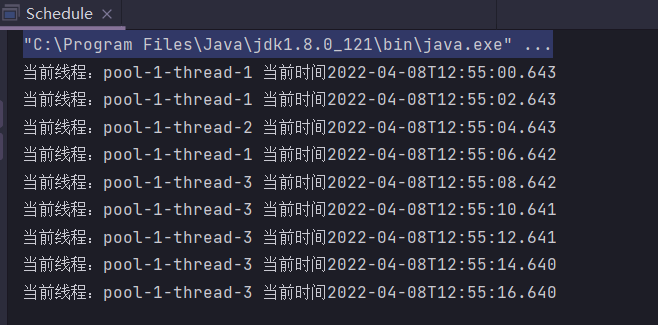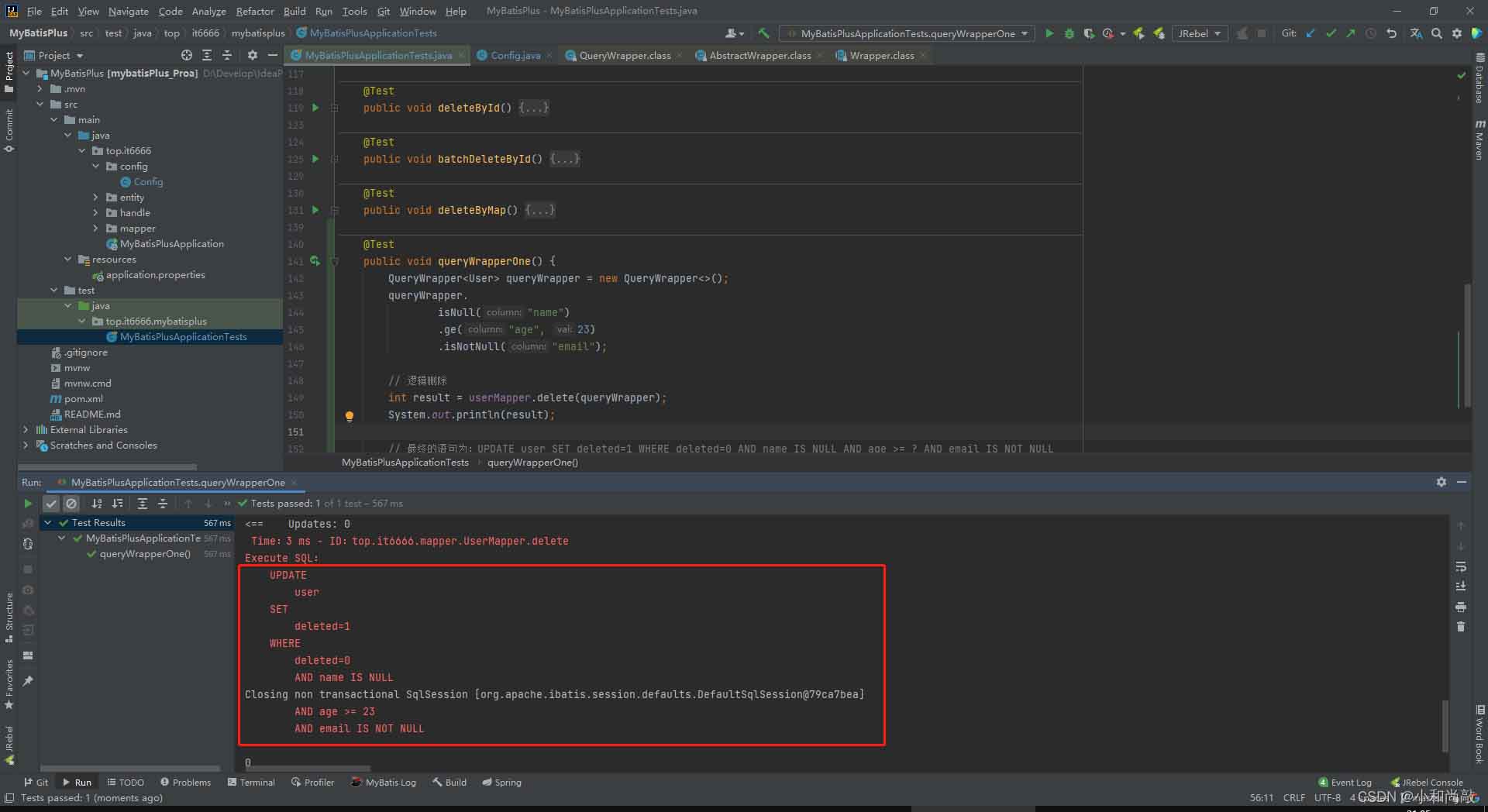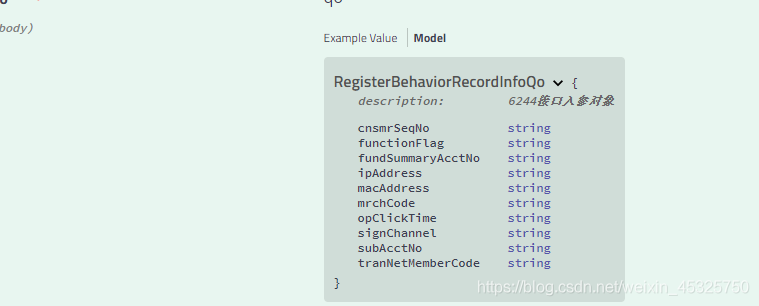这篇文章主要介绍了使用Spring Boot+gRPC构建微服务并部署,SpringCloud仅仅是一个开发框架,没有实现微服务所必须的服务调度、资源分配等功能,这些需求要借助Kubernetes等平台来完成,本文给大家介绍的非常详细,需要的朋友参考下吧
大家好,搞微服务也有好几年时间,从16年开始就一直关注微服务,到现在一直在使用的还是SpringCloud原生那套,虽然后来出现了SpringCloud Alibaba,但由于前面的所有系统框架都已定,就没有在变化,而在微服务的实施过程,为了降运维的服务度,先后使用了jenkins,docker, kubernetes等,就还是没有使用过Istio。
基于这个原因,一直想尝试下开发基于Istio的Service Mesh的应用。正好最近受够了Spring Cloud的“折磨”,对Kubernetes也可以熟练使用了,而且网上几乎没有Spring Boot微服务部署到Istio的案例,我就开始考虑用Spring Boot写个微服务的Demo并且部署到Istio。项目本身不复杂,就是发送一个字符串并且返回一个字符串的最简单的Demo。
1. 为什么要用Istio?
目前,对于Java技术栈来说,构建微服务的最佳选择是Spring Boot而Spring Boot一般搭配目前落地案例很多的微服务框架Spring Cloud来使用。
Spring Cloud看似很完美,但是在实际上手开发后,很容易就会发现Spring Cloud存在以下比较严重的问题:
服务治理相关的逻辑存在于Spring Cloud Netflix等SDK中,与业务代码紧密耦合。
SDK对业务代码侵入太大,SDK发生升级且无法向下兼容时,业务代码必须做出改变以适配SDK的升级——即使业务逻辑并没有发生任何变化。
各种组件令人眼花缭乱,质量也参差不齐,学习成本太高,且组件之间代码很难完全复用,仅仅为了实现治理逻辑而学习SDK也并不是很好的选择。
绑定于Java技术栈,虽然可以接入其他语言但要手动实现服务治理相关的逻辑,不符合微服务“可以用多种语言进行开发”的原则。
Spring Cloud仅仅是一个开发框架,没有实现微服务所必须的服务调度、资源分配等功能,这些需求要借助Kubernetes等平台来完成。但Spring Cloud与Kubernetes功能上有重合,且部分功能也存在冲突,二者很难完美配合。
替代Spring Cloud的选择有没有呢?有!它就是Istio。
Istio彻底把治理逻辑从业务代码中剥离出来,成为了独立的进程(Sidecar)。部署时两者部署在一起,在一个Pod里共同运行,业务代码完全感知不到Sidecar的存在。这就实现了治理逻辑对业务代码的零侵入——实际上不仅是代码没有侵入,在运行时两者也没有任何的耦合。这使得不同的微服务完全可以使用不同语言、不同技术栈来开发,也不用担心服务治理问题,可以说这是一种很优雅的解决方案了。
所以,“为什么要使用Istio”这个问题也就迎刃而解了——因为Istio解决了传统微服务诸如业务逻辑与服务治理逻辑耦合、不能很好地实现跨语言等痛点,而且非常容易使用。只要会用Kubernetes,学习Istio的使用一点都不困难。
1.1. 为什么要使用gRPC作为通信框架?
在微服务架构中,服务之间的通信是一个比较大的问题,一般采用RPC或者RESTful API来实现。
Spring Boot可以使用RestTemplate调用远程服务,但这种方式不直观,代码也比较复杂,进行跨语言通信也是个比较大的问题;而gRPC相比Dubbo等常见的Java RPC框架更加轻量,使用起来也很方便,代码可读性高,并且与Istio和Kubernetes可以很好地进行整合,在Protobuf和HTTP2的加持下性能也还不错,所以这次选择了gRPC来解决Spring Boot微服务间通信的问题。并且,虽然gRPC没有服务发现、负载均衡等能力,但是Istio在这方面就非常强大,两者形成了完美的互补关系。
由于考虑到各种grpc-spring-boot-starter可能会对Spring Boot与Istio的整合产生不可知的副作用,所以这一次我没有用任何的grpc-spring-boot-starter,而是直接手写了gRPC与Spring Boot的整合。不想借助第三方框架整合gRPC和Spring Boot的可以简单参考一下我的实现。
1.2. 编写业务代码
首先使用Spring Initializr建立父级项目spring-boot-istio,并引入gRPC的依赖。pom文件如下:
<?xml version="1.0" encoding="UTF-8"?>
<project xmlns="http://maven.apache.org/POM/4.0.0"
xmlns:xsi="http://www.w3.org/2001/XMLSchema-instance"
xsi:schemaLocation="http://maven.apache.org/POM/4.0.0 https://maven.apache.org/xsd/maven-4.0.0.xsd">
<modelVersion>4.0.0</modelVersion>
<modules>
<module>spring-boot-istio-api</module>
<module>spring-boot-istio-server</module>
<module>spring-boot-istio-client</module>
</modules>
<parent>
<groupId>org.springframework.boot</groupId>
<artifactId>spring-boot-starter-parent</artifactId>
<version>2.2.6.RELEASE</version>
<relativePath/>
</parent>
<groupId>site.wendev</groupId>
<artifactId>spring-boot-istio</artifactId>
<version>0.0.1-SNAPSHOT</version>
<name>spring-boot-istio</name>
<description>Demo project for Spring Boot With Istio.</description>
<packaging>pom</packaging>
<properties>
<java.version>1.8</java.version>
</properties>
<dependencyManagement>
<dependencies>
<dependency>
<groupId>io.grpc</groupId>
<artifactId>grpc-all</artifactId>
<version>1.28.1</version>
</dependency>
</dependencies>
</dependencyManagement>
</project>
然后建立公共依赖模块spring-boot-istio-api,pom文件如下,主要就是gRPC的一些依赖:
<?xml version="1.0" encoding="UTF-8"?>
<project xmlns="http://maven.apache.org/POM/4.0.0"
xmlns:xsi="http://www.w3.org/2001/XMLSchema-instance"
xsi:schemaLocation="http://maven.apache.org/POM/4.0.0 http://maven.apache.org/xsd/maven-4.0.0.xsd">
<parent>
<artifactId>spring-boot-istio</artifactId>
<groupId>site.wendev</groupId>
<version>0.0.1-SNAPSHOT</version>
</parent>
<modelVersion>4.0.0</modelVersion>
<artifactId>spring-boot-istio-api</artifactId>
<dependencies>
<dependency>
<groupId>io.grpc</groupId>
<artifactId>grpc-all</artifactId>
</dependency>
<dependency>
<groupId>javax.annotation</groupId>
<artifactId>javax.annotation-api</artifactId>
<version>1.3.2</version>
</dependency>
</dependencies>
<build>
<extensions>
<extension>
<groupId>kr.motd.maven</groupId>
<artifactId>os-maven-plugin</artifactId>
<version>1.6.2</version>
</extension>
</extensions>
<plugins>
<plugin>
<groupId>org.xolstice.maven.plugins</groupId>
<artifactId>protobuf-maven-plugin</artifactId>
<version>0.6.1</version>
<configuration>
<protocArtifact>com.google.protobuf:protoc:3.11.3:exe:${os.detected.classifier}</protocArtifact>
<pluginId>grpc-java</pluginId>
<pluginArtifact>io.grpc:protoc-gen-grpc-java:1.28.1:exe:${os.detected.classifier}</pluginArtifact>
<protocExecutable>/Users/jiangwen/tools/protoc-3.11.3/bin/protoc</protocExecutable>
</configuration>
<executions>
<execution>
<goals>
<goal>compile</goal>
<goal>compile-custom</goal>
</goals>
</execution>
</executions>
</plugin>
</plugins>
</build>
</project>
建立src/main/proto文件夹,在此文件夹下建立hello.proto,定义服务间的接口如下:
syntax = "proto3";
option java_package = "site.wendev.spring.boot.istio.api";
option java_outer_classname = "HelloWorldService";
package helloworld;
service HelloWorld {
rpc SayHello (HelloRequest)
returns (HelloResponse) {}
}
message HelloRequest {
string name = 1;
}
message HelloResponse {
string message = 1;
}很简单,就是发送一个name返回一个带name的message。
然后生成服务端和客户端的代码,并且放到java文件夹下。这部分内容可以参考gRPC的官方文档。
有了API模块之后,就可以编写服务提供者(服务端)和服务消费者(客户端)了。这里我们重点看一下如何整合gRPC和Spring Boot。
1) 服务端
业务代码非常简单:
/**
* 服务端业务逻辑实现
*
* @author 江文
* @date 2020/4/12 2:49 下午
*/
@Slf4j
@Component
public class HelloServiceImpl extends HelloWorldGrpc.HelloWorldImplBase {
@Override
public void sayHello(HelloWorldService.HelloRequest request,
StreamObserver<HelloWorldService.HelloResponse> responseObserver) {
// 根据请求对象建立响应对象,返回响应信息
HelloWorldService.HelloResponse response = HelloWorldService.HelloResponse
.newBuilder()
.setMessage(String.format("Hello, %s. This message comes from gRPC.", request.getName()))
.build();
responseObserver.onNext(response);
responseObserver.onCompleted();
log.info("Client Message Received:[{}]", request.getName());
}
}光有业务代码还不行,我们还需要在应用启动时把gRPC Server也给一起启动起来。首先写一下Server端的启动、关闭等逻辑:
/**
* gRPC Server的配置——启动、关闭等
* 需要使用<code>@Component</code>注解注册为一个Spring Bean
*
* @author 江文
* @date 2020/4/12 2:56 下午
*/
@Slf4j
@Componentpublic class GrpcServerConfiguration {
@Autowired
HelloServiceImpl service;
/** 注入配置文件中的端口信息 */
@Value("${grpc.server-port}")
private int port;
private Server server;
public void start() throws IOException {
// 构建服务端
log.info("Starting gRPC on port {}.", port);
server = ServerBuilder.forPort(port).addService(service).build().start();
log.info("gRPC server started, listening on {}.", port);
// 添加服务端关闭的逻辑
Runtime.getRuntime().addShutdownHook(new Thread(() -> {
log.info("Shutting down gRPC server.");
GrpcServerConfiguration.this.stop();
log.info("gRPC server shut down successfully.");
}));
}
private void stop() {
if (server != null) {
// 关闭服务端
server.shutdown();
}
}
public void block() throws InterruptedException {
if (server != null) {
// 服务端启动后直到应用关闭都处于阻塞状态,方便接收请求
server.awaitTermination();
}
}
}
定义好gRPC的启动、停止等逻辑后,就可以使用CommandLineRunner把它加入到Spring Boot的启动中去了:
/**
* 加入gRPC Server的启动、停止等逻辑到Spring Boot的生命周期中
*
* @author 江文
* @date 2020/4/12 3:10 下午
*/
@Component
public class GrpcCommandLineRunner implements CommandLineRunner {
@Autowired
GrpcServerConfiguration configuration;
@Override
public void run(String... args) throws Exception {
configuration.start();
configuration.block();
}
}之所以要把gRPC的逻辑注册成Spring Bean,就是因为在这里要获取到它的实例并进行相应的操作。
这样,在启动Spring Boot时,由于CommandLineRunner的存在,gRPC服务端也就可以一同启动了。
2) 客户端
业务代码同样非常简单:
/**
* 客户端业务逻辑实现
*
* @author 江文
* @date 2020/4/12 3:26 下午
*/
@RestController
@Slf4j
public class HelloController {
@Autowired
GrpcClientConfiguration configuration;
@GetMapping("/hello")
public String hello(@RequestParam(name = "name", defaultValue = "JiangWen", required = false) String name) {
// 构建一个请求 HelloWorldService.HelloRequest request = HelloWorldService.HelloRequest
.newBuilder()
.setName(name)
.build(); // 使用stub发送请求至服务端
HelloWorldService.HelloResponse response = configuration.getStub().sayHello(request);
log.info("Server response received: [{}]", response.getMessage());
return response.getMessage();
}
}
在启动客户端时,我们需要打开gRPC的客户端,并获取到channel和stub以进行RPC通信,来看看gRPC客户端的实现逻辑:
/**
* gRPC Client的配置——启动、建立channel、获取stub、关闭等
* 需要注册为Spring Bean
*
* @author 江文
* @date 2020/4/12 3:27 下午
*/
@Slf4j
@Component
public class GrpcClientConfiguration {
/** gRPC Server的地址 */
@Value("${server-host}")
private String host;
/** gRPC Server的端口 */
@Value("${server-port}")
private int port;
private ManagedChannel channel;
private HelloWorldGrpc.HelloWorldBlockingStub stub;
public void start() {
// 开启channel
channel = ManagedChannelBuilder.forAddress(host, port).usePlaintext().build();
// 通过channel获取到服务端的stub
stub = HelloWorldGrpc.newBlockingStub(channel);
log.info("gRPC client started, server address: {}:{}", host, port);
}
public void shutdown() throws InterruptedException {
// 调用shutdown方法后等待1秒关闭channel
channel.shutdown().awaitTermination(1, TimeUnit.SECONDS);
log.info("gRPC client shut down successfully.");
}
public HelloWorldGrpc.HelloWorldBlockingStub getStub() {
return this.stub;
}
}
比服务端要简单一些。
最后,仍然需要一个CommandLineRunner把这些启动逻辑加入到Spring Boot的启动过程中:
/**
* 加入gRPC Client的启动、停止等逻辑到Spring Boot生命周期中
*
* @author 江文
* @date 2020/4/12 3:36 下午
*/
@Component
@Slf4j
public class GrpcClientCommandLineRunner implements CommandLineRunner {
@Autowired
GrpcClientConfiguration configuration;
@Override
public void run(String... args) {
// 开启gRPC客户端
configuration.start();
// 添加客户端关闭的逻辑
Runtime.getRuntime().addShutdownHook(new Thread(() -> {
try {
configuration.shutdown();
} catch (InterruptedException e) {
e.printStackTrace();
}
}));
}
}
1.3、 编写Dockerfile
业务代码跑通之后,就可以制作Docker镜像,准备部署到Istio中去了。
在开始编写Dockerfile之前,先改动一下客户端的配置文件:
server:
port: 19090
spring:
application:
name: spring-boot-istio-clientserver-host: ${server-host}server-port: ${server-port}接下来编写Dockerfile:
1) 服务端:
FROM openjdk:8u121-jdk
RUN /bin/cp /usr/share/zoneinfo/Asia/Shanghai /etc/localtime \
&& echo 'Asia/Shanghai' >/etc/timezone
ADD /target/spring-boot-istio-server-0.0.1-SNAPSHOT.jar /ENV
SERVER_PORT="18080" ENTRYPOINT java -jar /spring-boot-istio-server-0.0.1-SNAPSHOT.jar主要是规定服务端应用的端口为18080,并且在容器启动时让服务端也一起启动。
2) 客户端:
FROM openjdk:8u121-jdk
RUN /bin/cp /usr/share/zoneinfo/Asia/Shanghai /etc/localtime \
&& echo 'Asia/Shanghai' >/etc/timezoneADD /target/spring-boot-istio-client-0.0.1-SNAPSHOT.jar /ENV GRPC_SERVER_HOST="spring-boot-istio-server"ENV GRPC_SERVER_PORT="18888"ENTRYPOINT java -jar /spring-boot-istio-client-0.0.1-SNAPSHOT.jar \ --server-host=$GRPC_SERVER_HOST \ --server-port=$GRPC_SERVER_PORT可以看到这里添加了启动参数,配合前面的配置,当这个镜像部署到Kubernetes集群时,就可以在Kubernetes的配合之下通过服务名找到服务端了。
同时,服务端和客户端的pom文件中添加:
<build>
<plugins>
<plugin>
<groupId>org.springframework.boot</groupId>
<artifactId>spring-boot-maven-plugin</artifactId>
<configuration>
<executable>true</executable>
</configuration>
</plugin>
<plugin>
<groupId>com.spotify</groupId>
<artifactId>dockerfile-maven-plugin</artifactId>
<version>1.4.13</version>
<dependencies>
<dependency>
<groupId>javax.activation</groupId>
<artifactId>activation</artifactId>
<version>1.1</version>
</dependency>
</dependencies>
<executions>
<execution>
<id>default</id>
<goals>
<goal>build</goal>
<goal>push</goal>
</goals>
</execution>
</executions>
<configuration>
<repository>wendev-docker.pkg.coding.net/develop/docker/${project.artifactId}</repository>
<tag>${project.version}</tag>
<buildArgs>
<JAR_FILE>${project.build.finalName}.jar</JAR_FILE>
</buildArgs>
</configuration>
</plugin>
</plugins>
</build>
这样执行mvn clean package时就可以同时把docker镜像构建出来了。
2. 编写部署文件
有了镜像之后,就可以写部署文件了:
1) 服务端:
apiVersion: v1
kind:
Servicemetadata:
name: spring-boot-istio-server
spec:
type: ClusterIP
ports:
- name: http
port: 18080
targetPort: 18080
- name: grpc
port: 18888
targetPort: 18888
selector:
app: spring-boot-istio-server
---apiVersion: apps/v1
kind:
Deploymentmetadata:
name: spring-boot-istio-server
spec:
replicas: 1
selector:
matchLabels:
app: spring-boot-istio-server
template:
metadata:
labels:
app: spring-boot-istio-server
spec:
containers:
- name: spring-boot-istio-server
image: wendev-docker.pkg.coding.net/develop/docker/spring-boot-istio-server:0.0.1-SNAPSHOT
imagePullPolicy: Always
tty: true
ports:
- name: http
protocol: TCP
containerPort: 18080
- name: grpc
protocol: TCP
containerPort: 18888
主要是暴露服务端的端口:18080和gRPC Server的端口18888,以便可以从Pod外部访问服务端。
2) 客户端:
apiVersion: v1
kind:
Servicemetadata:
name:
spring-boot-istio-client
spec:
type: ClusterIP
ports:
- name: http
port: 19090
targetPort: 19090
selector:
app: spring-boot-istio-client
---apiVersion: apps/v1
kind:
Deploymentmetadata:
name: spring-boot-istio-client
spec:
replicas: 1
selector:
matchLabels:
app: spring-boot-istio-client
template:
metadata:
labels:
app: spring-boot-istio-client
spec:
containers:
- name: spring-boot-istio-client
image: wendev-docker.pkg.coding.net/develop/docker/spring-boot-istio-client:0.0.1-SNAPSHOT
imagePullPolicy: Always
tty: true
ports:
- name: http
protocol: TCP
containerPort: 19090
主要是暴露客户端的端口19090,以便访问客户端并调用服务端。
如果想先试试把它们部署到k8s可不可以正常访问,可以这样配置Ingress:
apiVersion: networking.k8s.io/v1beta1
kind:
Ingressmetadata:
name: nginx-web
annotations:
kubernetes.io/ingress.class: "nginx"
nginx.ingress.kubernetes.io/use-reges: "true"
nginx.ingress.kubernetes.io/proxy-connect-timeout: "600"
nginx.ingress.kubernetes.io/proxy-send-timeout: "600"
nginx.ingress.kubernetes.io/proxy-read-timeout: "600"
nginx.ingress.kubernetes.io/proxy-body-size: "10m"
nginx.ingress.kubernetes.io/rewrite-target: /
spec:
rules:
- host: dev.wendev.site
http:
paths:
- path: /
backend:
serviceName: spring-boot-istio-client
servicePort: 19090
Istio的网关配置文件与k8s不大一样:
apiVersion: networking.istio.io/v1alpha3
kind:
Gatewaymetadata:
name: spring-boot-istio-gateway
spec:
selector:
istio: ingressgateway
servers:
- port:
number: 80
name: http
protocol: HTTP
hosts:
- "*"
---apiVersion: networking.istio.io/v1alpha3
kind: Virtual
Servicemetadata:
name: spring-boot-istio
spec:
hosts:
- "*"
gateways:
- spring-boot-istio-gateway
http:
- match:
- uri:
exact: /hello
route:
- destination:
host: spring-boot-istio-client
port:
number: 19090
主要就是暴露/hello这个路径,并且指定对应的服务和端口。
3. 部署应用到Istio
首先搭建k8s集群并且安装istio。我使用的k8s版本是1.16.0,Istio版本是最新的1.6.0-alpha.1,使用istioctl命令安装Istio。建议跑通官方的bookinfo示例之后再来部署本项目。
注:以下命令都是在开启了自动注入Sidecar的前提下运行的
我是在虚拟机中运行的k8s,所以istio-ingressgateway没有外部ip:
$ kubectl get svc istio-ingressgateway -n istio-system
NAME TYPE CLUSTER-IP EXTERNAL-IP PORT(S)
AGEistio-ingressgateway NodePort 10.97.158.232 <none> 15020:30388/TCP,80:31690/TCP,443:31493/TCP,15029:32182/TCP,15030:31724/TCP,15031:30887/TCP,15032:30369/TCP,31400:31122/TCP,15443:31545/TCP 26h所以,需要设置IP和端口,以NodePort的方式访问gateway:
export INGRESS_PORT=$(kubectl -n istio-system get service istio-ingressgateway -o jsonpath='{.spec.ports[?(@.name=="http2")].nodePort}')
export SECURE_INGRESS_PORT=$(kubectl -n istio-system get service istio-ingressgateway -o jsonpath='{.spec.ports[?(@.name=="https")].nodePort}')
export INGRESS_HOST=127.0.0.1export GATEWAY_URL=$INGRESS_HOST:$INGRESS_PORT
这样就可以了。
接下来部署服务:
$ kubectl apply -f spring-boot-istio-server.yml
$ kubectl apply -f spring-boot-istio-client.yml
$ kubectl apply -f istio-gateway.yml
必须要等到两个pod全部变为Running而且Ready变为2/2才算部署完成。
接下来就可以通过
curl -s http://${GATEWAY_URL}/hello
访问到服务了。如果成功返回了Hello, JiangWen. This message comes from gRPC.的结果,没有出错则说明部署完成。
GitHub地址: github.com/WenDev/spri…
到此这篇关于使用Spring Boot+gRPC构建微服务并部署的文章就介绍到这了,更多相关Spring Boot gRPC微服务内容请搜索编程学习网以前的文章希望大家以后多多支持编程学习网!
本文标题为:使用Spring Boot+gRPC构建微服务并部署的案例详解


基础教程推荐
- springboot下使用shiro自定义filter的个人经验分享 2024-02-27
- 深入理解约瑟夫环的数学优化方法 2024-03-07
- Java中EnvironmentAware 接口的作用 2023-01-23
- Java编写实现窗体程序显示日历 2023-01-02
- 使用Java和WebSocket实现网页聊天室实例代码 2024-02-25
- 是否适合从javabean类更新数据库? 2023-11-04
- Java+mysql实现学籍管理系统 2023-03-16
- 运用El表达式截取字符串/获取list的长度实例 2023-08-01
- JavaWeb 实现验证码功能(demo) 2024-04-14
- JSP 动态树的实现 2023-12-17

















